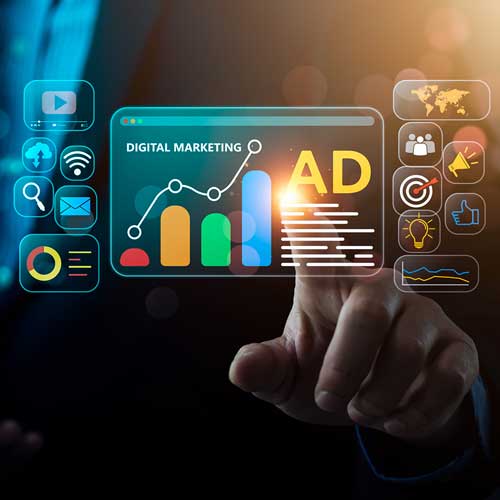In the face of COVID-19, both small and large businesses have grappled with unprecedented challenges. While some have had to permanently shut down, others were able to reopen or modify their operations to fit the new normal.
Despite these challenges, businesses are finding innovative ways to not only survive but also thrive and expand. The current situation has necessitated new norms for conducting business, which are likely to persist even after the pandemic.
In these uncertain times, businesses need to think creatively and adapt their models to succeed in a rapidly changing environment.
Here are some strategies that businesses of all sizes are employing to stay open and adjust to the new reality of "remote & digital online business practices":
1. Embracing remote work & digital operations:
Many businesses, deemed “non-essential,” had to close or scale back operations. However, they seized this opportunity to transition their staff to remote work.
Depending on the nature of the business and industry, remote work may require the following tools:
a. Remote Access: Remote access software allows employees to log in to their workstations from anywhere. There are numerous such software available, both free and paid. TechRadar’s article “Best remote desktop software of 2021: Free, paid and for business” provides a comprehensive list.
b. Virtual Meetings: Virtual meetings have become the norm for industries that require face-to-face interaction. Various software enable employees, customers, and other participants to engage in real-time chats via web and video conferencing interfaces. The following link provides comparisons of many different services from free to paid “Web Conferencing Software”
c. Web-Based CRM & POS: Transitioning to secure digital online systems, such as Customer Records Management and Point-of-Sale systems, is now the norm. These systems allow employees to access and operate the business from anywhere with a secure internet connection.
While some solutions take longer to implement, they provide the business a fully online and secure solution employees and staff can access to conduct work remotely. Most web-based CRM and POS systems can be tailored and customized to fit any company’s unique needs.
2. Leveraging online sales & service:
a. Online sales & e-commerce: Businesses with physical storefronts can benefit from online sales. E-commerce allows companies to list all their products for sale, including shipping and handling costs, enabling customers to browse and securely purchase products online.
b. Online servicing: Service-based businesses can also benefit from online sales and e-commerce by:
* listing their services online for purchase,
*
scheduling consultations,
*
and using video chat for counseling needs,
*
among other remote online methods.
c. Online & offline combinations: Businesses that lack the resources to set up e-commerce can still update their websites to allow customers to express their needs via phone calls, emails, or online forms.
3. Making use of chat, text, email & phone services:
a. Chat services: Online chat services provide real-time assistance to users seeking more information on products and services.
* Most chat services allow one to provide answers to many common questions by live agents, as well as AI (Artificial Intelligence).
*
Most chat services allow agents to share files, documents, links, and images with users needing direction to information for making a buying decision.
b. Texting: Many customers prefer texting over emails or phone calls. Businesses should ensure they can accommodate text inquiries about products, services, and customer support.
c. Email correspondence: Email remains a viable and affordable method of serving customers.
d. Phone conversations: Phone conversations offer a unique opportunity to gauge a customer's tone and attitude while providing the necessary information.
4. Utilizing social media platforms:
a. Social media: Businesses should ensure their social media profiles list all available services and products.
b. Direct messaging: Direct messaging on social media platforms can be a great alternative for businesses whose websites do not support e-commerce.
5. Exploring additional online & offline marketing ideas:
a. Direct mail: Direct mail (such as postcards and flyers) remains an effective method of reaching potential customers. While the cost of direct mail and EDDM (Every Door Direct Mail) are often more than digital advertising, it's still nominal compared to other forms of advertising including radio, television, etc.
b. Digital ads: Digital advertising encompasses any form of online ads:
*
Google Ads search & display advertising,
*
Bing Ads,
* Yelp,
* and so on.
Digital ads often show at the top and bottom of search results with “Ad” next to it. As well, digital ads often show up on related network pages (for example when reading an article on related subject matter).
Most digital advertising platforms allow any desired budget, as low as $1/day with no commitment, cancel anytime.
However, most platforms recommend a minimum budget of $250/month for local ads, and $500-1000/month for regional or national ads in order to truly be effective.
c. Social media ads: Social media platforms also offer various forms of digital online advertising. Again, these platforms often allow any budget for as little as $1/day, cancel anytime.
d. Email marketing: Email marketing remains one of the most effective methods of reaching customers and prospects letting prospects know about the business, its offerings, special needs, upcoming sales & promotions.
e. Host web-based classes, seminars & workshops: Many professionals have transitioned to providing online classes, seminars, and workshops.
f. Contacting the customer database: Businesses should keep their customers informed about any changes made to adjust to the changing marketplace.
g. Offering delivery & curbside pickup options: These options help maintain social distancing by limiting traffic in and out of establishments.
h. Using other online platforms to supplement: Platforms like Amazon Marketplace, Google Shopping, Instacart, Uber Eats, Grubhub, eBay, and many more can help businesses survive a decline in local foot traffic.
6. Updating Google My Business cards: Businesses should ensure their Google My Business cards are updated to reflect any changes made to accommodate the new normal:
a. Update Hours
b. Update Online & Delivery options
c. Update all products and services available
Most of all, DO NOT STOP ADVERTISING! As noted in this article in Forbes magazine, it’s historically important to continuing advertising during a recession or any economic hardship. Those companies that fail to continue to advertise lose a foothold and have shrinking markets once things do return to normal. Those businesses that take advantage and increase advertising during such time, come out on top with tremendous growth once all is said and done!
While challenges necessitate innovative survival methods, it's crucial to keep marketing plans flexible and updated. Always be ready for new opportunities to grow!
Above all, businesses should never exploit a challenging situation for profit. Such exploitation can harm the company's reputation in the long run. Remember, the way a company responds to challenges matters; always be sympathetic to events affecting humanity!













